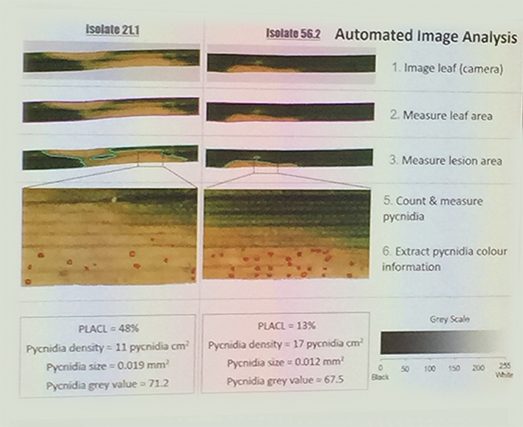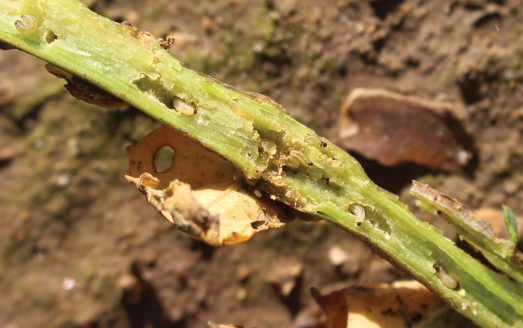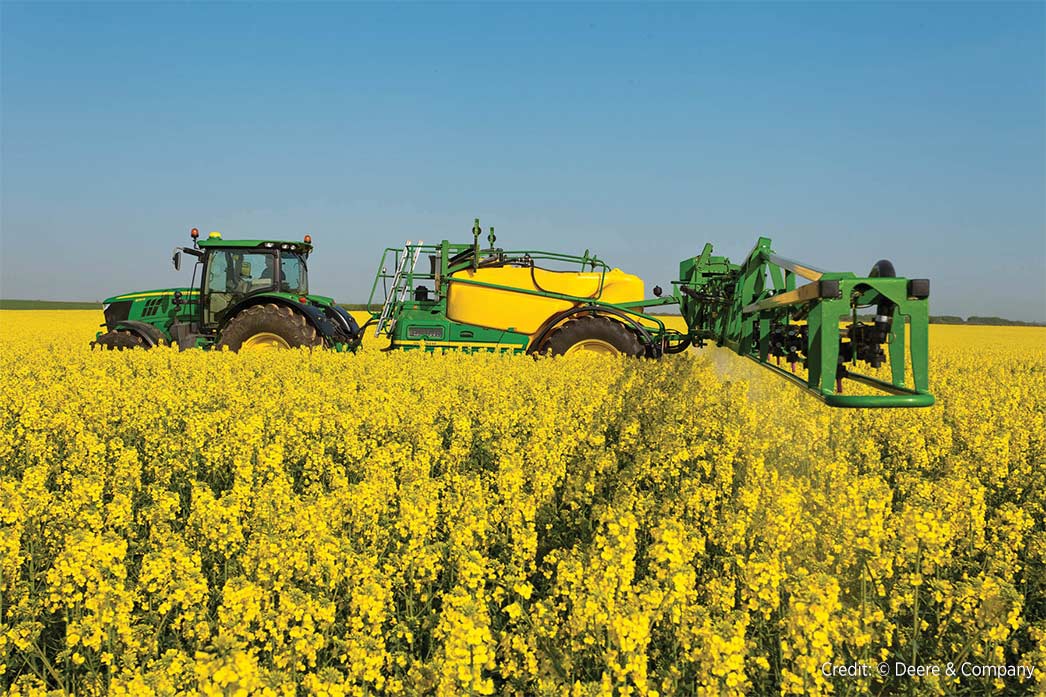Disease and seed tips from England
 In September 2017, my colleague Brittany Hennig and I had the opportunity to go to the British Society of Plant Pathology (BSPP) meeting at the University of Nottingham in England. The conference had a focus on control of disease using genetics (including genetic modification and RNAi), pesticides and biocontrol.
In September 2017, my colleague Brittany Hennig and I had the opportunity to go to the British Society of Plant Pathology (BSPP) meeting at the University of Nottingham in England. The conference had a focus on control of disease using genetics (including genetic modification and RNAi), pesticides and biocontrol.
This was an excellent opportunity to hear about diseases in other crops (such as tan spot and septoria in cereals) and learn what technology is being researched. Of particular interest on the agenda were presentations on the impact of new technologies on strategies to increase the durability of disease resistance, on integrated pest management (IPM) strategies, and on the agronomic potential of gene silencing.
The conference had over 160 attendees from more than 15 countries. It was excellent to meet many of the PhD candidates and researchers who conduct the work.
Conference highlights
Here are a few of the highlights I took home from the conference:
- Durable disease resistance relies on fungicide to support the genetic resistance. Relying on one alone will not be enough. It is more sustainable to integrate and balance chemical fungicide with crop genetic resistance.
- Tan spot and septoria on wheat can be controlled by the interaction of pathogen gene products called nectrophic effectors (NE), which interact with host sensitivity genes. With this information, breeders have been able to improve disease resistance by eliminating germplasm-carrying relevant NE genes.
- DNA sequencing is becoming an inexpensive commodity. We are two to three years away from having a disposable $1,000 handheld in-field DNA sequencer.
- Breeding programs must adapt to the reality of disruptive technologies and unprecedented amounts of marker, sequence, phenotypic and meta information.
- Genotyping has become relatively easy; phenotyping remains difficult and limits progress in most marker-trait association studies. Using imaging (high-throughput phenotyping) to determine disease infection (rather than visual observations) could help breeders focus on using resistance that decreases pathogen reproduction.

Off to Cambridge
After the conference, we headed to National Institute of Agricultural Botany (NIAB), a plant science research organization in Cambridge, England. We met with Jane Thomas, who looks after field crop research and pathology, Simon Kightley, who is a researcher focusing on oilseed and pulse crops, and Cheryl Turnbull, who is responsible for the delivery of the winter oilseed rape testing program. We had a few topics in mind to discuss during our time at NIAB, including verticillium stripe, canola variety registration and testing programs, and how the ban of neonicotinoids is affecting oilseed rape producers in England.
The time at NIAB was definitely a highlight of the trip for me. As someone who is interested in variety registration and testing product performance, it was valuable to hear about their comprehensive variety registration system. In order for a variety to be sold in the U.K., it must be on the U.K. National List (NL) or the E.U. Common Catalogue (which includes registered varieties from all members in the U.K.). To be added to this list, varieties must meet two components to the testing program: the variety must be distinct, uniform and stable in performance (DUS test) and show value for cultivation and use (VCU test).
A number of insecticide products that were once registered for use on oilseed rape (OSR) in the U.K. have been banned or become ineffective. Without a seed treatment, U.K. farmers have an increased reliance on foliar insecticides.
Being on the NL is vital to breeders and seed companies. However, this program tends to look at qualities that differ from what farmers would typically look at. This is where the Recommended List testing program comes in. The role of the Recommended List is to provide relevant, independent information to growers, advisors and end users of varieties. It allows growers to make informed decisions on variety choice, and it promotes continual crop improvement. The data is updated annually. New varieties are added if they offer an advantage and old varieties are removed. I would consider this equivalent to our Canola Performance Trials.
We also had an opportunity to discuss how the ban of neonicotinoids is affecting their growers. Of particular concern is the cabbage stem flea beetle (CSFB). Having no seed treatment insecticide options leaves the crop vulnerable during establishment. CSFB damage can range from two to 50 per cent, and even result in total crop loss. In fact, a number of insecticide products that were once registered for use on oilseed rape (OSR) in the U.K. have been banned or become ineffective. Without a seed treatment, U.K. farmers have an increased reliance on foliar insecticides.

Overall, the time in the U.K. was very interesting and educational. Getting to meet some researchers and help connect them to researchers here in Western Canada and talk about some of the canola-focused research here is always an excellent opportunity.





